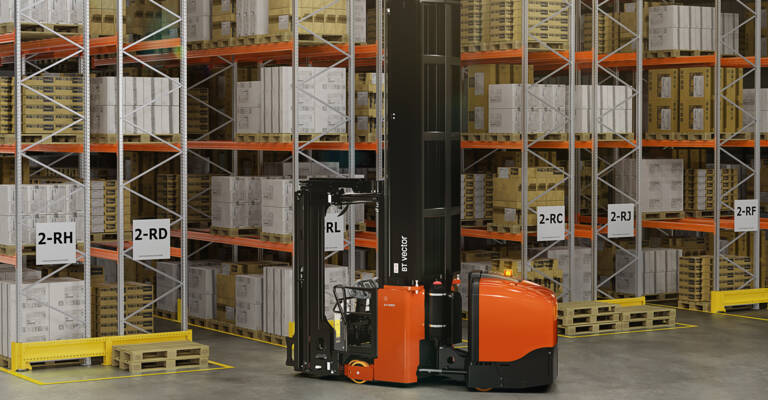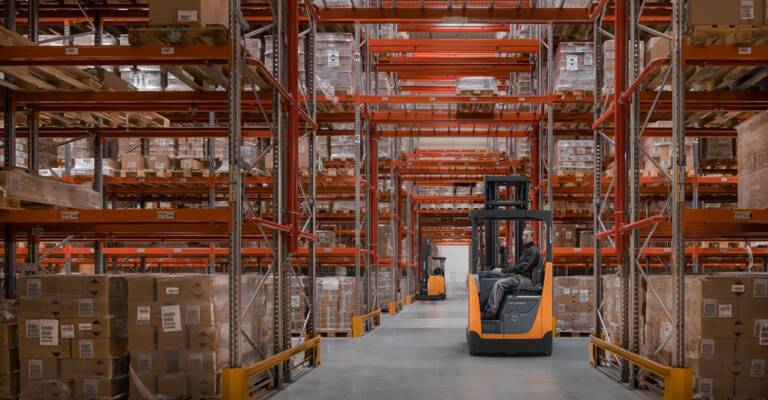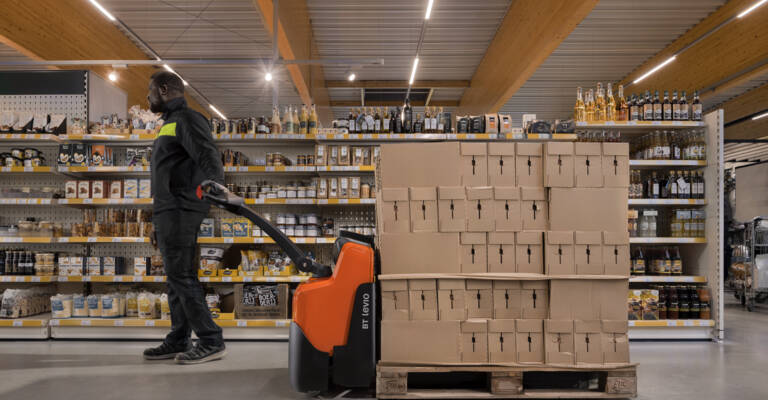How much can I lift with my forklift?
Learn the right capacity for your forklift
How to work out a forklift’s real capacity
What is the difference between load capacity and residual capacity?
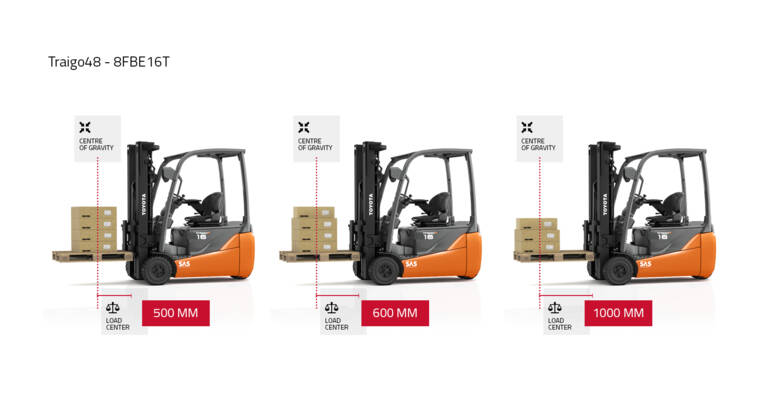
A forklift truck will state its load capacity, or nominal capacity. This is calculated as the maximum weight it can raise to a pre-determined height, when its load centre is at a certain point.
If the load needs to be lifted above that height, or the load centre is further away, then the capacity will be lowered. That’s what residual capacity is: the actual lifting ability in a given situation, which may be less than the nominal capacity.
What is the load centre?
The load centre is the horizontal distance from the vertical face of the forks to the centre of gravity of the load. Standard load centres vary depending on the nominal capacity of the forklift, and will be one of the following:
- 0 – 1,000 kg: 400 mm
- 1,001 – 5,000 kg: 500 mm
- 5,001 – 10,000 kg: 600 mm
In some cases, the load centre of a truck can differ from the standardised example above, so always make sure to check the data sheet of the truck you're considering.
How do forklift attachments affect capacity?
Adding a forklift attachment reduces the lifting capacity of the truck, firstly because of the additional weight and secondly because it typically moves the truck’s load centre further forward. If you are in doubt about how much an attachment will reduce a forklift’s capacity, speak to a product representative before adding it.
What capacity do I actually need?
Of course, this depends on the type of load you wish to transport, as well as how high you need to lift it. To get you started, here are some questions to ask yourself:
- How heavy is my load? Measure the weight of the heaviest pallet you have to lift during operations. It’s better to err on the side of caution rather than risk overloading a truck.
- How high do I need to lift my loads? Take the highest shelf you need to reach, and add a safety margin of 200 mm.
- What length is my largest load? Remember that longer loads may push out the load centre.
- What type of attachments will the lift truck use? Remember to factor in their weight and position.
Nominal and residual capacity - an example with Traigo 48
The nominated capacity of a forklift is based on the model and related to the (counter-)weight of the truck. At the given example below, the Traigo48-8FBE16T has a nominal capacity of 1,6 tonnes. In the table you can see that the machine has a residual capacity of 1,6 tonnes at a load centre of 500 mm up to the given height of 5000 mm.
However, if you would like to lift the load above 5000 mm or if the load centre is moved, you'll see that the actual lift capacity decreases, which is what we call the residual capacity. Other factors that have an impact on the load centre, such as forklift attachments, fork length, load shape, etc. will also be reflected on the residual capacity. If one or more of these factors affects the load centre, pushing it to e.g. 1000 mm instead, you can see in the table that the residual capacity is only 990 kg.
Residual capacity result
With the nominal capacity 1,6 t for Traigo48-8FBE16T
| Load center (mm) | |||
| Height (mm) | 500 | 600 | 1000 |
|---|---|---|---|
| 3000 | 1600 | 1420 | 990 |
| 4000 | 1600 | 1420 | 990 |
| 5000 | 1600 | 1320 | 930 |
| 6000 | 1510 | 1160 | 800 |
| 7000 | 750 | 660 | 460 |
| 7500 | 550 | 490 | 340 |
* Nominal capacity describes the maximum weight a forklift can raise to a certain height at the standardised load centre
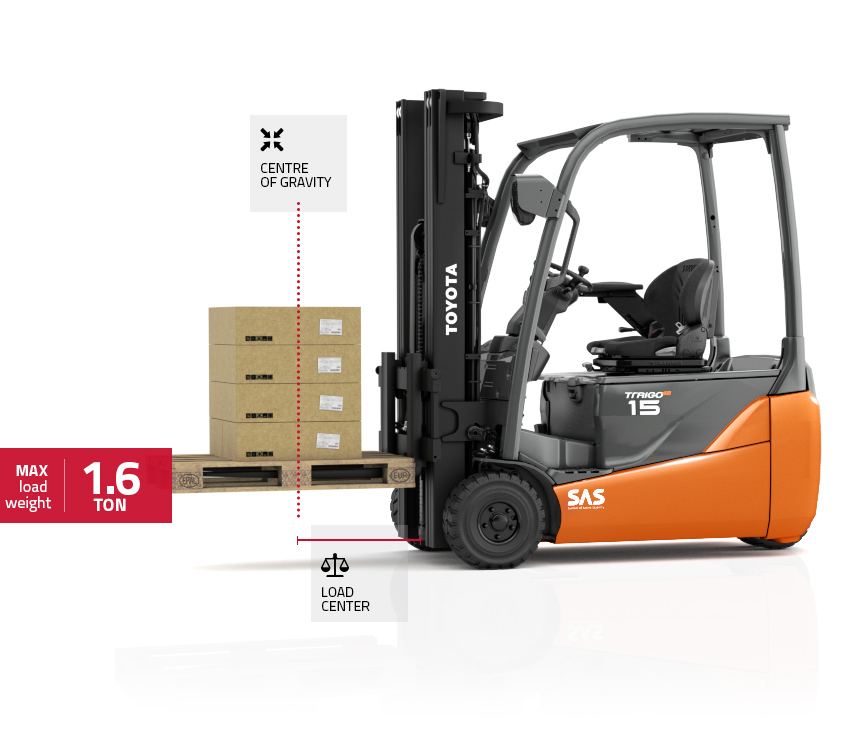
Safety first
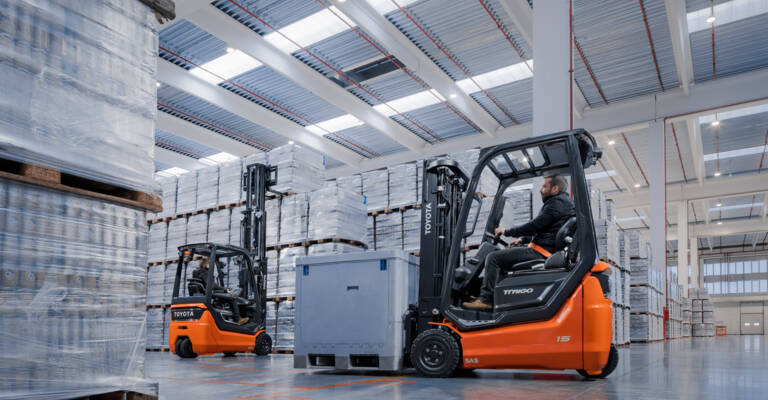
To ensure your employees’ safety, it’s crucial to first work out the maximum height and load centre of the loads and storage spaces you work with. Then, make sure your forklifts can handle those jobs – which means checking not just their nominal capacity, but their residual capacity for that situation.
Each forklift has a load capacity chart that indicates the true weight it can lift at various heights and load centres. This will help determine if a forklift you are considering buying is right for the jobs you have in mind.
Toyota Material Handling offers a wide range of forklifts, from 1.0 tonne 3-wheel electric to 8.0 tonne high-capacity electric or engine-powered options. To find out which forklift is the right choice for you, browse our range now or contact one of our product experts.


